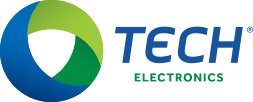Catalog

Duluth, GA 30097
United States
Barco
Model: ClickShare CX-20

Sir Humphry Davy was a 19th century chemist who – amongst many other things – discovered chlorine and iodine. He also invented the ‘Davy lamp’: one of the first forms of an incandescent light bulb. But more importantly to the cinema market: he was the first to demonstrate carbon-arc lighting, somewhere around 1805. In this concept a high-brightness light source is created by igniting a spark in free air between two carbon rods. The young and emerging cinema market the Lumière brothers helped to build willingly used this invention as it made it possible to light up the big screen.
Flash forward 140 years to 1940’s Germany. One of the innovations coming out of that era was the successor of the carbon-arc lamp: the Xenon-arc lamp. In this gas-discharge lamp, light is produced by passing electricity through ionized Xenon gas under high pressure. These lamps were less labor intensive to use and provided a white color that closely resembled natural sunlight. These two attractive parameters were eagerly adopted by the movie world, once the concept was industrialized in the early 1950’s.
Digital cinema or hybrid cinema?
Flash forward 50 years again to the introduction of digital cinema. Leveraging the digitization of content and equipment, the industry saw an opportunity to bring better images to the audience, with a more efficient process behind it. 35mm reels and their projectors were replaced by Digital Cinema Packages (DCP’s) and digital projection systems. The audio world had already taken the step to digital many years before, and now image was ready to follow with a workflow that was fully made up of bits and bytes and the equipment to match it: encrypted, connected etc. It took some time to get the conversion going, but between 2005 and 2015 the cinema industry went from 5% to more than 95% digital.
If you thought all traces of the old analog world were erased, think again! The first generations of digital projectors still had a critical analog component inside. A component that easily took up more than 20% of the space and required alignment or replacement every couple of months: our dear old friend the Xenon-arc lamp.
Yes, what the industry proudly called ‘digital cinema’ is actually closer to ‘hybrid cinema’: using a 60-year-old, high-power technology as the light source of a 21st century digital system. Don’t get me wrong: there’s nothing wrong with hybrid systems or products, if that’s what it takes to get the job done. The problem is that the lamp was still a hurdle in meeting the ambition of fully optimized cinema operations. The longest life variants for cinema go up to 3,500 hours of lifetime, which means that users are still replacing a lamp at least once per year – assuming an average annual runtime of the screen of 4,000 hours. It’s like using a cassette deck for your favorite Spotify dance playlist, and having to swap it every 30 minutes during a party.
Laser projection: true digital cinema
What if we could take this further and bridge the gap from hybrid with the introduction of a fully digital projection system for cinema? Flash forward again to 2012: the first laser-illuminated projector demo for large-screen cinema
Laser illumination is the digital light source that closes this gap. At the core of Barco’s 60,000-lumen flagship laser projectors, are tiny electronic laser diodes that convert electrical power into visible light. And this is not just going digital for the sake of going digital: laser light sources boost lifetimes to 30,000 hours and higher. Now that the era of optimized cinema operations has started, the days of swapping lamps every couple of months are gone. And there’s more: due to their unique optical properties, laser light sources deliver image quality – in terms of brightness, contrast, uniformity, etc. – that was impossible before.
The pace of innovation in cinema has been continuously increasing. The latest step is closing the chasm of what is actually ‘hybrid cinema’ to a technology that finally delivers the true ambition of digital cinema: better image quality and efficiency. Laser illumination is that technology and it’s picking up quickly.
Happy retirement!
With thousands of projection systems deployed, we will soon be celebrating the retirement of our old friend, the Xenon-arc lamp. Where I live, the official retirement age is 65 years. Introduced in 1954, this would mean we can send off the Xenon-arc lamp for a well-deserved rest in 2019… Will you join the party?



